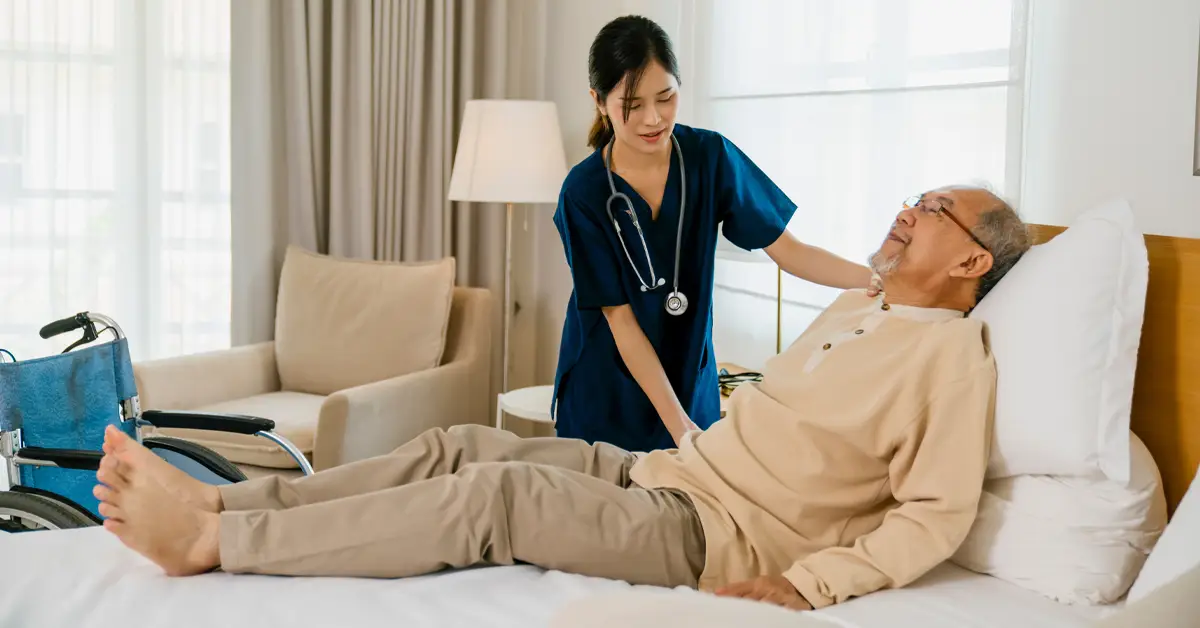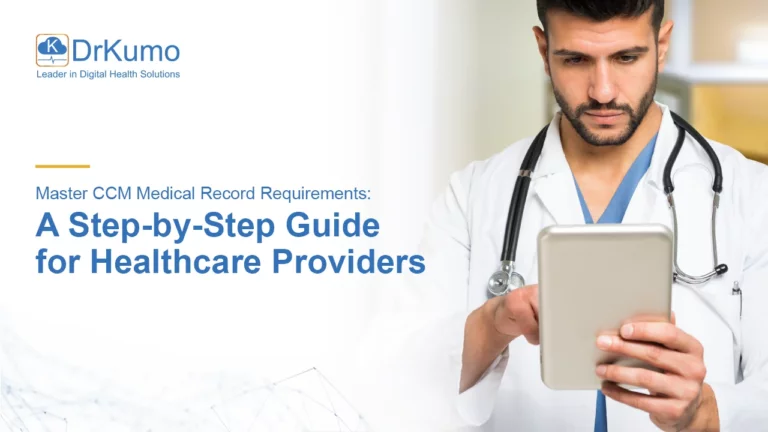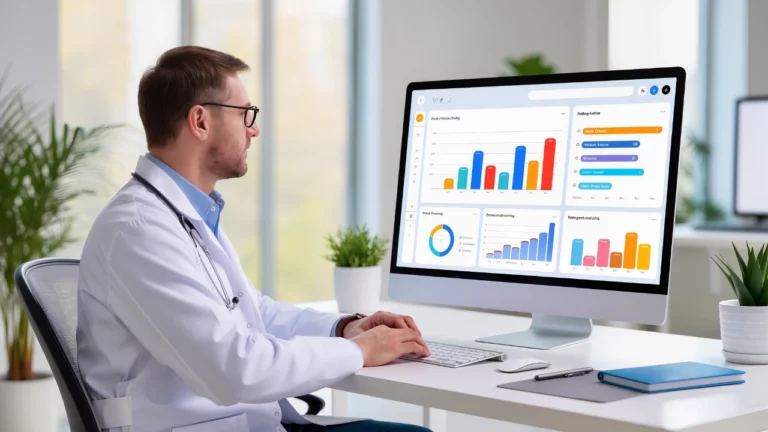Surgery can be a life-changing event and the postoperative period is crucial for a successful recovery. Research has consistently shown that adoption of enhanced recovery leads to significant improvements in patient satisfaction, outcomes and reduction in cost of care. Traditionally, patients recovering from surgery had to rely on in-person visits from healthcare providers, follow-up appointments, and home care services to monitor their progress.
With the advent of remote patient monitoring (RPM) technology, the postoperative care process has been transformed, making it easier for patients to recover at home. By providing patients with the necessary tools and support, RPM helps ensure that postoperative care is delivered in a safe and efficient manner, and that patients can recover from surgery as quickly and comfortably as possible.
In this article, we will explain how remote patient monitoring is revolutionizing postoperative care at home, and how it can help patients, their caregivers, and healthcare providers alike.
Postoperative Care at Home
Postoperative care is an essential part of the recovery process after surgery. The goal of postoperative care is to ensure that the patient’s surgical wounds are healing properly and that they are able to return to their normal activities as soon as possible. Postoperative care at home is a crucial component of the recovery process and involves a variety of services, including wound care, pain management, physical therapy, and follow-up appointments.
In the past, postoperative care at home was typically provided by family members or professional care services, who would visit the patient regularly to check on their progress and provide assistance with daily tasks. However, with the advent of RPM technology, studies prove that postoperative care at home has been transformed. RPM provides patients with the tools and support they need to recover from surgery at home, without the need for in-person visits from healthcare providers.
With RPM, patients can keep track of their recovery progress from the comfort of their own home. They can monitor their vital signs, check for warning signs of infection, and receive instructions for proper wound care. In addition, RPM enables patients to communicate with their healthcare providers and caregivers, even when they are not physically present. This allows healthcare providers to keep track of a patient’s progress and adjust their care plan if necessary, ensuring that patients receive the care they need to make a full and successful recovery.
Remote Patient Monitoring
Remote patient monitoring (RPM) is a healthcare technology that enables healthcare providers to monitor a patient’s condition remotely. With RPM, patients can use wearable devices or mobile apps to track their vital signs and other health data, and send this information to their healthcare providers in real-time.
One of the primary benefits of RPM is that it enables patients to receive care in the comfort of their own home, without the need for in-person visits from healthcare providers. This can be especially beneficial for patients who are recovering from surgery, as it allows them to focus on their recovery without having to leave their home for frequent doctor’s appointments.
RPM can also help healthcare providers to detect potential problems early and take action before they become serious. For example, if a patient’s vital signs indicate that they are developing an infection, their healthcare provider can respond promptly and prescribe the appropriate treatment.
Another benefit of RPM is that it can improve the quality of care that patients receive. With RPM, patients can receive more frequent and personalized care, as their healthcare providers can monitor their progress in real-time and adjust their care plan as needed. This can lead to better outcomes, faster recoveries, and higher patient satisfaction.
Caregiver Support
Caregivers play a critical role in supporting patients as they recover from surgery at home. Caregivers can provide physical, emotional, and practical support to help patients heal and regain their strength.
One of the most important responsibilities of a caregiver is to ensure that patients are following their doctor’s instructions and taking their medications as prescribed. Caregivers can also help patients with tasks such as bathing, dressing, and getting in and out of bed, as well as assist with wound care and other aspects of postoperative care.
Another important role of caregivers is to provide emotional support to patients during the recovery process. This can include listening to patients’ concerns, answering their questions, and offering encouragement and reassurance.
In addition to providing hands-on care, caregivers can also support patients by coordinating their postoperative care and ensuring that they have access to all of the services and resources they need. For example, they can coordinate home health services, such as physical therapy and nursing care, and help patients make appointments for follow-up visits with their doctor.
RPM can also provide valuable support to caregivers. With RPM, caregivers can monitor the health of their loved ones in real-time and receive alerts if their condition changes. This can give them peace of mind and help them feel more confident in their ability to provide the care their loved ones need.
Wound Care and Pain Management
Postoperative care at home involves proper wound care and effective pain management. It’s important to follow the instructions provided by your doctor to ensure proper healing and prevent any complications. Proper wound care involves cleaning and dressing the incision site as directed. Pain management may involve over-the-counter or prescription medication, as well as non-medical methods such as ice packs and deep breathing exercises.
It’s important to monitor for any signs of infection, such as redness, swelling, and drainage, and to report these symptoms to your doctor immediately. Your doctor may also provide you with instructions on physical activity and other postoperative care, such as deep breathing exercises, to promote recovery and prevent blood clots.
If you are experiencing pain or discomfort, don’t hesitate to reach out to your healthcare provider for advice and guidance. In addition to following your doctor’s instructions, it is also important to manage your pain and maintain your overall health and wellness during your recovery. With proper wound care, pain management, and the support of a caregiver, you can make your recovery from surgery as comfortable and successful as possible.
Post-Operative Care After Discharge
After being discharged from the hospital, it’s important to continue with your postoperative care at home. This may involve ongoing medical appointments and follow-up visits with your doctor to monitor your progress and ensure proper healing. It may also include continuing with your pain management plan, wound care, and physical therapy as recommended by your doctor.
It’s important to pay attention to your body’s signals and to seek medical attention if you experience any warning signs, such as a high fever, excessive pain, or signs of infection. Your doctor may also provide you with additional instructions or modifications to your care plan as you continue to recover.
In addition to medical care, it’s also important to prioritize your overall wellness and to participate in activities that promote healing and recovery. This may include light physical activity, healthy eating, and getting enough rest.
Having a support system in the form of a caregiver, friends, or family can also help in your recovery. They can assist with daily tasks and provide emotional support as you continue on the path to recovery.
In-home care services can also provide additional support and help with your day-to-day needs as you recover from surgery. Whether you need help with physical tasks, medical needs, or simply need someone to be there for you, in-home care services can provide the extra assistance you need.
Normal Activities and Warning Signs
As a patient, it’s important to understand what activities you can participate in and what warning signs to be aware of during your postoperative care at home. Resuming normal activities such as getting dressed and engaging in light physical activity can help make your recovery process smoother. However, it’s also important to not overdo it and to listen to your body’s needs.
Your doctor may provide instructions on when it’s safe to resume normal activities and how to gradually increase physical activity. Warning signs to be aware of include excessive pain, swelling, redness or discharge around the surgical site, and fever. These may indicate a risk of complications after surgery and it’s important to contact your doctor immediately if you experience any of these symptoms.
It’s also important to continue with any recommended deep breathing exercises and to monitor your vital signs regularly. This proactive approach can help prevent complications and ensure a smooth recovery. Additionally, be sure to attend all follow-up appointments as recommended by your doctor to monitor your progress and address any potential concerns.
DrKumo Remote Patient Monitoring for Post-Operative Home Care
Post-operative care is a critical aspect of recovery after a surgery, and the ability to receive quality care at home is a game changer for patients. With DrKumo’s Remote Patient Monitoring technology, postoperative care can be delivered to patients in the comfort of their homes. The technology allows for continuous real-time monitoring, giving healthcare providers the ability to intervene in a timely manner if needed.
DrKumo’s solutions are user-friendly, powered by state-of-the-art technology, and are HIPAA-compliant. The company is a technology leader in the healthcare industry and is dedicated to revolutionizing the way people access quality healthcare. With a culture that is innovative, collaborative, and technology-driven, DrKumo provides effective solutions to both patients and healthcare providers.
Whether it’s chronic disease management, acute care, postoperative care, or hospital care at home, DrKumo is committed to solving the most painful problems in healthcare. The company’s AI/ML engine enables real-time intelligence for timely interventions, ensuring that patients receive the best possible care.
Takeaways
Postoperative care at home can be a challenging time for patients and their caregivers. With the integration of remote patient monitoring, patients can receive the care they need from the comfort of their own homes. This technology provides the opportunity for patients to receive real-time support from healthcare professionals and helps ensure their recovery is on track.
Having a caregiver, who can provide support with day-to-day tasks, wound care, and pain management, can also make a significant difference during the postoperative recovery process. It’s important for patients to understand the importance of following their doctor’s instructions, attending follow-up appointments, and monitoring their vital signs. By doing so, they can minimize the risk of complications and return to their normal activities as soon as possible.
Take control of your health today and join the revolution in postoperative care through remote patient monitoring. Contact DrKumo now.








